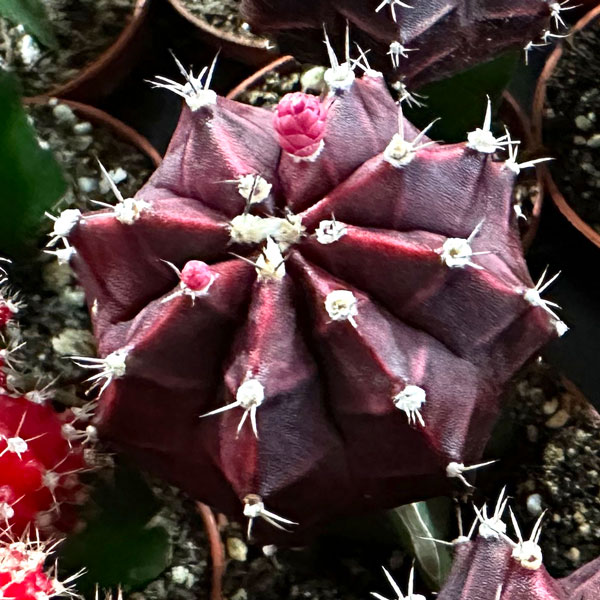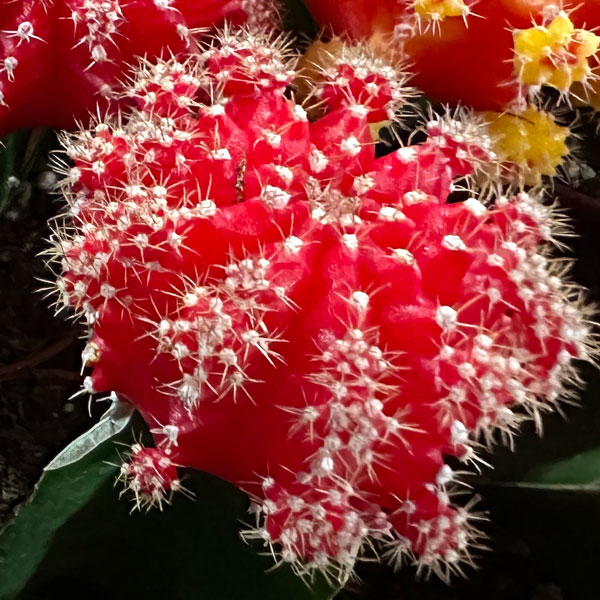The Odd Journey of Moon Cactus
I want to thank you for subscribing (remember, we’re free) to e-gardens. You make me responsible for finding interesting topics each week. Frankly, my page was blank when it came to moon cacti. You caused me to do some new-fashioned homework (web-surfing) to find the accurate details about them.

Here’s what I found…
• Native to lower elevations of Paraguay, also Brazil and Argentina.
• Scientific name, should you want to do further reading, Gymnocalcium mihanovichii.
• Common names: moon cactus, chin cactus, plaid cactus.
• The species is a slow-growing, globular, dark green plant to 2-3 in. tall and 3-4 in. wide.
• Prefers bright, indirect sunlight, especially the light-colored variegates and especially in the hottest part of the summer.
• Their preferred growing temperatures range from 60F to 80F. Do not expose the plants to temperatures below 50 degrees.
• Potting soil should be gravely and well-draining.


• Many of the showiest types have little or no chlorophyll. They are unable to manufacture their own sugars, so they would soon wither and die if we didn’t graft them onto a green rootstock. Most growers choose Hylocereus undatus.
• This grafting was first used in Japan in 1948, and moon cacti were introduced to the American market in the 1960s. However, it wasn’t until the 80s and 90s that they really become common.
• Few serious insect and disease pests are common on these plants. Watch out for mealybugs, spider mites, and root rot due to poor drainage.
• Repot your plant every couple of years to give it fresh soil.
• If it produces offsets you can try to your hand at grafting them, too!
